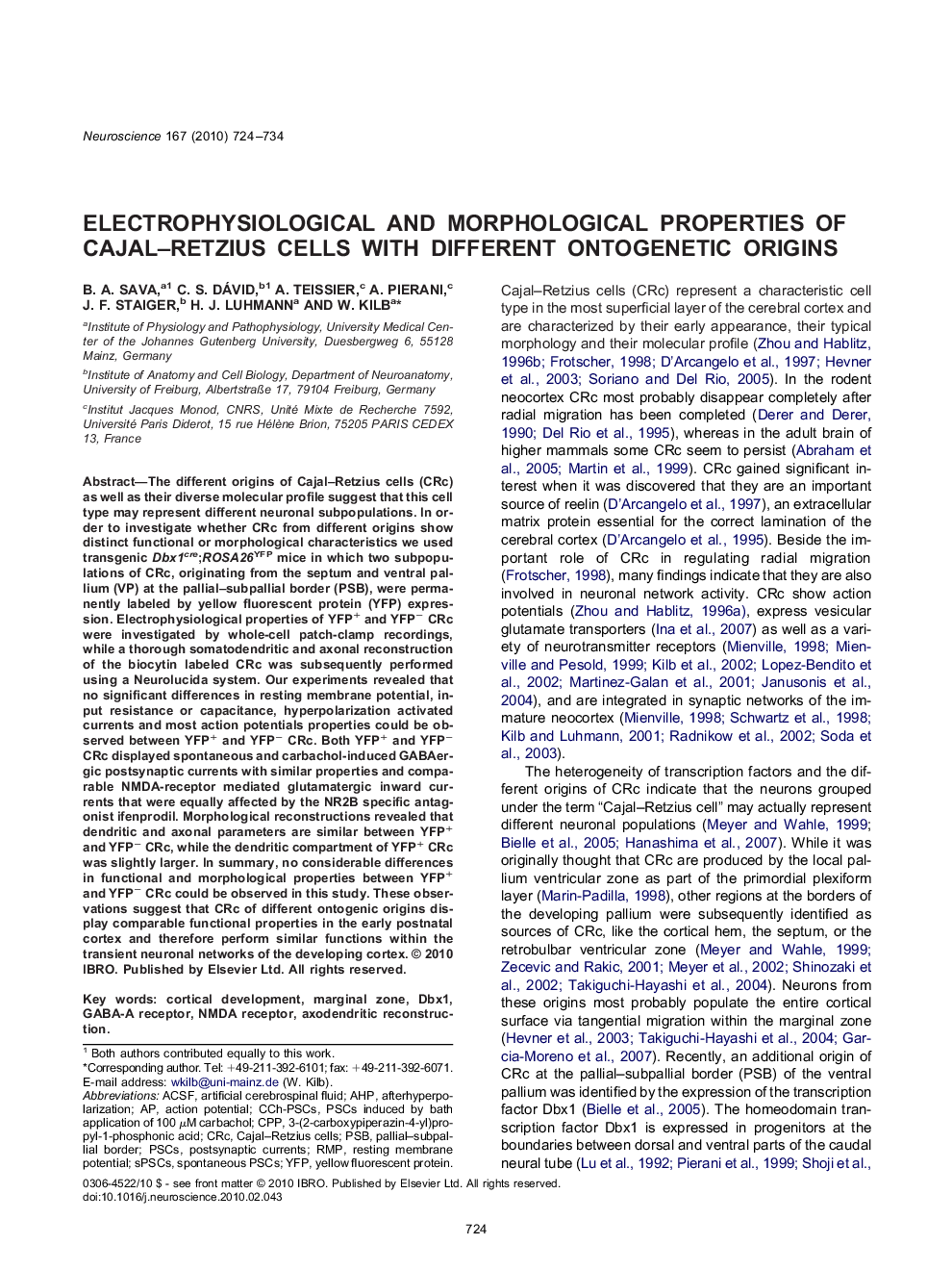| Article ID | Journal | Published Year | Pages | File Type |
|---|---|---|---|---|
| 4339622 | Neuroscience | 2010 | 11 Pages |
The different origins of Cajal–Retzius cells (CRc) as well as their diverse molecular profile suggest that this cell type may represent different neuronal subpopulations. In order to investigate whether CRc from different origins show distinct functional or morphological characteristics we used transgenic Dbx1cre;ROSA26YFP mice in which two subpopulations of CRc, originating from the septum and ventral pallium (VP) at the pallial–subpallial border (PSB), were permanently labeled by yellow fluorescent protein (YFP) expression. Electrophysiological properties of YFP+ and YFP− CRc were investigated by whole-cell patch-clamp recordings, while a thorough somatodendritic and axonal reconstruction of the biocytin labeled CRc was subsequently performed using a Neurolucida system. Our experiments revealed that no significant differences in resting membrane potential, input resistance or capacitance, hyperpolarization activated currents and most action potentials properties could be observed between YFP+ and YFP− CRc. Both YFP+ and YFP− CRc displayed spontaneous and carbachol-induced GABAergic postsynaptic currents with similar properties and comparable NMDA-receptor mediated glutamatergic inward currents that were equally affected by the NR2B specific antagonist ifenprodil. Morphological reconstructions revealed that dendritic and axonal parameters are similar between YFP+ and YFP− CRc, while the dendritic compartment of YFP+ CRc was slightly larger. In summary, no considerable differences in functional and morphological properties between YFP+ and YFP− CRc could be observed in this study. These observations suggest that CRc of different ontogenic origins display comparable functional properties in the early postnatal cortex and therefore perform similar functions within the transient neuronal networks of the developing cortex.
